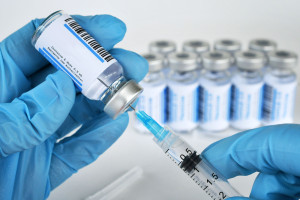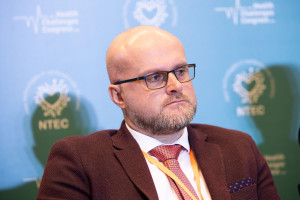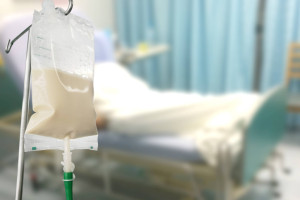Experts: Rare neurological diseases are a test of our system's efficiency

- Since 2019, Poland has been operating a treatment program for spinal muscular atrophy (SMA). The first drug available to patients was nusinersen. Two more drugs joined later: gene therapy and risdiplam
- Last year, another change was made to the B.102 program: an expanded scope of indications for gene therapy and treatment with nusinersen in pregnant women.
- - The B.102 drug program works like a model. It is a model for us to follow and has the potential to be transferred to other programs in rare neurological diseases - said Deputy Minister of Health, Marek Kos, during the regional debate "Rare neurological diseases in the Lublin province" (Lublin, May 9, 2025).
- The meeting was an opportunity to sum up the activities of the healthcare system in the Lublin Voivodeship.
- - We mention the Lublin province as one of the best organized in terms of medical care in the field of neurology. We have excellently cooperating centers in the province - said Prof. Konrad Rejdak, provincial consultant for neurology in the Lublin province
- A positive example of Lublin neurology is cooperation in ensuring continuous care between pediatric and adult patients with spinal muscular atrophy.
- - Our pediatric patients are smoothly transferred to the care of neurologists for adults. We can be proud of the very good cooperation between our centers - said Prof. Magdalena Chrościńska-Krawczyk, provincial consultant for pediatric neurology in the Lublin province.
The B.102 program for the treatment of spinal muscular atrophy (SMA) was launched in 2019 with the breakthrough of the first effective therapy that changed the face of this disease.
- The Minister of Health included the nusinersen molecule in the reimbursement program. After four years, there was another revolution. Two more molecules were included in the reimbursement - gene therapy and risdiplam - filling the gap in the possibility of treating patients who, for various reasons, did not qualify for the first therapy. Last year, another change: an extended scope of indications for gene therapy and treatment with nusinersen in pregnant women - Dagmara Marczewska, deputy director of medical affairs of the Lublin Branch of the National Health Fund, listed the milestones in the treatment of SMA in Poland.
As she emphasized during the regional debate "Rare neurological diseases in the Lublin province" (Lublin, May 9, 2025), the financing of the program was carried out under agreements concluded with two facilities: University Clinical Hospital No. 4 in Lublin and the University Children's Hospital in Lublin since March 2019. Importantly, cooperation between these entities ensured the continuity of therapy. Pediatric patients who began treatment in the children's hospital smoothly transitioned to the neurological clinic in the adult hospital.
- Currently, all three therapies are financed in the Lublin province. When we started with one drug in 2019, its financing was at the level of almost PLN 2 million. In 2024, the value of the B.102 program in the Lublin region is already over PLN 31 million - summed up director Marczewska.
She explained that the increase in funding is a direct result of the number of patients: - Over the years 2019-2024, we have 48 patients treated with nusinersen, 26 patients treated with risdiplam and one patient for whom we financed gene therapy. Additionally, there are 12 patients treated as part of the so-called migration to other provinces.
In terms of expenditure on the B.102 programme, the Lublin voivodeship ranks 7th in the country.
B.102 sets the standardThe experts who met at the debate in Lublin unanimously agreed that the SMA treatment program is exemplary and can be an example for other programs in rare neurological diseases.
- The B.102 drug program is working as a model. Poland was one of the first countries in the world to organize care for spinal muscular atrophy so comprehensively, starting with ensuring quick access to treatment, through screening tests and increasingly better transition. The program, which gives patients so many options, is a model for us to follow and has the potential to be transferred to other programs for rare neurological diseases - said Deputy Minister of Health, Marek Kos.
Which is not to say that there are no challenges when it comes to organizing medical care for rare diseases. One of them is diagnostics. Another problem is that there are still few therapeutic options available for these diseases. In total, there are 7-8 thousand rare diseases, but only 6 percent of them have effective therapy.
- These diseases have been waiting for a long time for a full and strong place in the care system. The entire infrastructure of diagnostic procedures is being created around the treatment program. Now we are building a network in terms of diagnostics, treatment, centers - said Prof. Konrad Rejdak, provincial consultant for neurology in the Lublin province, head of the Department and Clinic of Neurology at the Medical University of Lublin, head of the Clinical Department of Neurology at SPSK No. 4 in Lublin.

- Knowledge of a rare disease, which has a very specific clinical picture, but can also be very variable, often exceeds the competence of a family doctor or even a specialist in a given field. Comprehensive genetic tests help us a lot. Testing the entire genome can reveal mutations, which then require interpretation. We hope that a reference patient path will appear in our system, within which in the case of a suspected disease, we will refer the patient to a specific center, which will immediately perform a package of tests and we will not prolong the diagnostics in time - assessed Prof. Rejdak, referring to the often raised diagnostic odyssey of patients who wait years for a correct diagnosis.
Another challenge is to create a system based on a very interdisciplinary approach from many fields, including neurology, neuropsychology, but also social care and rehabilitation. This also involves cooperation between institutions.
- We mention the Lublin province as one of the better organized in terms of medical care in the area of neurology. We have excellent cooperation between centers in the province. We are proud of various successes here, for example in the care of stroke patients. But rare diseases are also a test of the efficiency of our system - emphasized Prof. Rejdak, pointing to the specificity of the Lublin province:
- We have consolidated institutions such as the University Children's Hospital, University Clinical Hospital No. 4 and No. 1, thanks to which patients can benefit from comprehensive care. We are also proud of the fact that in the Lublin region all programs in the area of neurology are financed by the National Health Fund. We also have an excellent network of general neurology clinics. We set an example for other provinces.
When a Pediatric Patient Becomes an Adult PatientA positive example of neurology in Lublin is cooperation in ensuring continuous care between pediatric and adult patients.
- Our pediatric patients are smoothly transferred to the care of adult neurologists. We can boast of very good cooperation between our centers. We can inform colleagues in advance that another patient will soon reach the age of 18 and will be transferred to the adult clinic - said Prof. Magdalena Chrościńska-Krawczyk, provincial consultant for pediatric neurology in the Lublin province, head of the Pediatric Neurology Clinic of the University Children's Hospital in Lublin.
However, there are still several voivodeships in Poland where there are no drug programs in the field of neurology for adults, including spinal muscular atrophy.
- Patients who turn 18 must go to other provinces to continue treatment. There are also provinces, such as Świętokrzyskie, where the B.102 drug program is not conducted in either a pediatric or adult center - added Prof. Chrościńska-Krawczyk.
Also, not all rare diseases that affect children have such a smooth transition.
- We will have to solve this problem systemically. Thanks to better diagnostics, more and more rare diseases are being diagnosed. Thanks to new therapeutic options, survival is getting longer and more patients reach the age of 18. After that time, our patients must be cared for in adult centers. Perhaps the solution would be to delay this waiting period until the age of 21 - suggested the expert.
Deputy Minister of Health Marek Kos assured that appropriate actions would be taken: - Today the age limit is 18, but we know well that there are certain exceptions, for example related to the date of graduation or other cut-off dates.
Copyrighted material - reprint rules are specified in the regulations .
rynekzdrowia





![We know the quality assessment indicators. It's high time to check for yourself how the hospital is doing [COMMENTARY]](https://pliki2.rynekzdrowia.pl/i/22/52/98/225298_r0_300.jpg)






